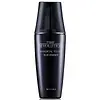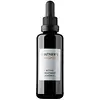What's inside
What's inside
 Key Ingredients
Key Ingredients

 Benefits
Benefits

 Concerns
Concerns

 Ingredients Side-by-side
Ingredients Side-by-side

Water
Skin ConditioningGlycerin
HumectantButylene Glycol
HumectantNiacinamide
SmoothingLinum Usitatissimum Seed Extract
PerfumingMacadamia Ternifolia Seed Oil
EmollientHydrogenated Lecithin
EmulsifyingPentylene Glycol
Skin ConditioningLecithin
EmollientCeramide AP
Skin Conditioning1,2-Hexanediol
Skin ConditioningCetyl Ethylhexanoate
EmollientPhenoxyethanol
PreservativeCarbomer
Emulsion StabilisingPEG-60 Hydrogenated Castor Oil
EmulsifyingSqualane
EmollientCaprylic/Capric Triglyceride
MaskingCeramide NP
Skin ConditioningSodium Dilauramidoglutamide Lysine
HumectantSodium Hydroxide
BufferingPolyquaternium-51
Skin ConditioningAdenosine
Skin ConditioningParfum
MaskingSodium Ascorbyl Phosphate
AntioxidantCalendula Officinalis Flower Extract
MaskingCassia Alata Leaf Extract
AstringentPseudoalteromonas Ferment Extract
HumectantDisodium EDTA
Hydrolyzed Wheat Protein
Skin ConditioningHydrolyzed Soy Protein
HumectantEthylhexylglycerin
Skin ConditioningCaprylyl Glycol
EmollientXanthan Gum
EmulsifyingTripeptide-10 Citrulline
Skin ConditioningSh-Decapeptide-9
Skin ConditioningTripeptide-1
Skin ConditioningResveratrol
AntioxidantSodium Cocoyl Alaninate
Sodium Hyaluronate
HumectantHydroxyethyl Acrylate/Sodium Acryloyldimethyl Taurate Copolymer
Emulsion StabilisingMoringa Oleifera Seed Extract
Skin ConditioningMaltodextrin
AbsorbentCucumis Melo Fruit Extract
Skin ConditioningHydroxypropyltrimonium Maltodextrin Crosspolymer
Triethanolamine
BufferingWater, Glycerin, Butylene Glycol, Niacinamide, Linum Usitatissimum Seed Extract, Macadamia Ternifolia Seed Oil, Hydrogenated Lecithin, Pentylene Glycol, Lecithin, Ceramide AP, 1,2-Hexanediol, Cetyl Ethylhexanoate, Phenoxyethanol, Carbomer, PEG-60 Hydrogenated Castor Oil, Squalane, Caprylic/Capric Triglyceride, Ceramide NP, Sodium Dilauramidoglutamide Lysine, Sodium Hydroxide, Polyquaternium-51, Adenosine, Parfum, Sodium Ascorbyl Phosphate, Calendula Officinalis Flower Extract, Cassia Alata Leaf Extract, Pseudoalteromonas Ferment Extract, Disodium EDTA, Hydrolyzed Wheat Protein, Hydrolyzed Soy Protein, Ethylhexylglycerin, Caprylyl Glycol, Xanthan Gum, Tripeptide-10 Citrulline, Sh-Decapeptide-9, Tripeptide-1, Resveratrol, Sodium Cocoyl Alaninate, Sodium Hyaluronate, Hydroxyethyl Acrylate/Sodium Acryloyldimethyl Taurate Copolymer, Moringa Oleifera Seed Extract, Maltodextrin, Cucumis Melo Fruit Extract, Hydroxypropyltrimonium Maltodextrin Crosspolymer, Triethanolamine
Aloe Barbadensis Leaf Juice
Skin ConditioningMalpighia Emarginata Fruit Extract
Skin ConditioningMoringa Oleifera Seed Extract
Skin ConditioningAlthaea Officinalis Root Extract
Skin ConditioningGlycyrrhiza Glabra Root Extract
BleachingCentella Asiatica Extract
CleansingUrtica Dioica Leaf Extract
Skin ConditioningGinkgo Biloba Leaf Extract
Skin ConditioningTaraxacum Officinale Root Extract
Skin ConditioningHelichrysum Italicum Extract
AntiseborrhoeicCamellia Sinensis Leaf Extract
AntimicrobialMedicago Sativa Leaf Extract
Skin ConditioningAstragalus Membranaceus Root Extract
EmollientVerbascum Thapsus
Skin ConditioningBacillus Ferment
Skin ConditioningLactic Acid
BufferingArginine
MaskingVinegar
Avena Sativa Bran Extract
AbrasiveNiacinamide
SmoothingGlycerin
HumectantTerminalia Ferdinandiana Fruit Extract
AntioxidantNelumbo Nucifera Extract
Skin ConditioningSaccharide Isomerate
HumectantPyrus Malus Fruit Extract
Skin ConditioningChlorella Vulgaris Extract
Skin ConditioningMaltodextrin
AbsorbentOriganum Majorana Leaf Extract
AntiseborrhoeicGluconolactone
Skin ConditioningMuriella Aurantiaca/Ruttnera Lamellosa Oil
Skin ConditioningLecithin
EmollientRuttnera Lamellosa Oil
Skin ConditioningWatanabea Reniformis Oil
Skin ConditioningSodium Ascorbate
AntioxidantSodium Hyaluronate
HumectantPapain
Skin ConditioningBromelain
Skin ConditioningArgemone Mexicana Callus Extract
AntioxidantMirabilis Jalapa Callus Extract
Skin ProtectingPolianthes Tuberosa Callus Extract
AntioxidantSodium Phytate
Sodium Hydroxide
BufferingLevulinic Acid
PerfumingSodium Levulinate
Skin ConditioningSodium Benzoate
MaskingPotassium Sorbate
PreservativeAloe Barbadensis Leaf Juice, Malpighia Emarginata Fruit Extract, Moringa Oleifera Seed Extract, Althaea Officinalis Root Extract, Glycyrrhiza Glabra Root Extract, Centella Asiatica Extract, Urtica Dioica Leaf Extract, Ginkgo Biloba Leaf Extract, Taraxacum Officinale Root Extract, Helichrysum Italicum Extract, Camellia Sinensis Leaf Extract, Medicago Sativa Leaf Extract, Astragalus Membranaceus Root Extract, Verbascum Thapsus, Bacillus Ferment, Lactic Acid, Arginine, Vinegar, Avena Sativa Bran Extract, Niacinamide, Glycerin, Terminalia Ferdinandiana Fruit Extract, Nelumbo Nucifera Extract, Saccharide Isomerate, Pyrus Malus Fruit Extract, Chlorella Vulgaris Extract, Maltodextrin, Origanum Majorana Leaf Extract, Gluconolactone, Muriella Aurantiaca/Ruttnera Lamellosa Oil, Lecithin, Ruttnera Lamellosa Oil, Watanabea Reniformis Oil, Sodium Ascorbate, Sodium Hyaluronate, Papain, Bromelain, Argemone Mexicana Callus Extract, Mirabilis Jalapa Callus Extract, Polianthes Tuberosa Callus Extract, Sodium Phytate, Sodium Hydroxide, Levulinic Acid, Sodium Levulinate, Sodium Benzoate, Potassium Sorbate
Alternatives
Ingredients Explained
These ingredients are found in both products.
Ingredients higher up in an ingredient list are typically present in a larger amount.
Glycerin is already naturally found in your skin. It helps moisturize and protect your skin.
A study from 2016 found glycerin to be more effective as a humectant than AHAs and hyaluronic acid.
As a humectant, it helps the skin stay hydrated by pulling moisture to your skin. The low molecular weight of glycerin allows it to pull moisture into the deeper layers of your skin.
Hydrated skin improves your skin barrier; Your skin barrier helps protect against irritants and bacteria.
Glycerin has also been found to have antimicrobial and antiviral properties. Due to these properties, glycerin is often used in wound and burn treatments.
In cosmetics, glycerin is usually derived from plants such as soybean or palm. However, it can also be sourced from animals, such as tallow or animal fat.
This ingredient is organic, colorless, odorless, and non-toxic.
Glycerin is the name for this ingredient in American English. British English uses Glycerol/Glycerine.
Learn more about GlycerinLecithin is a term for a group of substances found in the cell membranes of plants, animals, and humans. They are made up of mixture of phospholipids.
This ingredient has emollient and emulsifying properties.
As an emollient, lecithen helps soften the skin and creates a barrier to keep moisture in.
As an emulsifier, it also helps prevent water and oil ingredients from separating. Lecithin can also help ingredients be better absorbed by the skin.
This is because the phospholipids in lecithin produce liposomes. Liposomes help other ingredients get through the skin barrier.
Depending on the source of this ingredient, lecithin may not be fungal acne safe. This is because some sources of lecithin come from soybean oil, which may feed the malassezia yeast that feeds fungal acne.
We recommend reaching out to the brand you are purchasing from to inquire about the source of their lecithin.
Some other names for this ingredient include soy lecithin and deoiled soy lecithin.
Learn more about LecithinMaltodextrin is a polysaccharide. It is derived from starch such as rice, corn, wheat, or potato starch.
In food, Maltodextrin is used to improve the texture and thicken a product. Due to its structure, it can help create a gel texture. As an emulsion stabilizer, it helps keep the ingredients in a product together.
As a polysaccharide, Maltodextrin has moisturizing properties. Polysaccharides are a type of carbohydrate. The top layer of skin uses polysaccharides to retain water, keeping the skin hydrated.
Maltodextrin is water soluble and has a sweet taste.
Learn more about MaltodextrinMoringa Oleifera Seed Extract comes from the seeds of the Moringa oleifera plant.
Moringa seeds have antioxidant, anti-inflammatory, and skin hydrating properties. These seeds are rich in oils, proteins, monounsaturated fats, and tocopherols.
As an emollient, moringa seed oil helps trap moisture in the skin by creating a film on top. This helps keep your skin hydrated and soft.
Many compounds in moringa seed oil are antioxidant and anti-inflammatory. These compounds include Vitamin E. , catechins, ferulic acid, and more.
Another compound found in Moringa seed oil is oleic acid.
Moringa trees are native to the Himalayan mountains.
Learn more about Moringa Oleifera Seed ExtractNiacinamide is a multitasking form of vitamin B3 that strengthens the skin barrier, reduces pores and dark spots, regulates oil, and improves signs of aging.
And the best part? It's gentle and well-tolerated by most skin types, including sensitive and reactive skin.
You might have heard of "niacin flush", or the reddening of skin that causes itchiness. Niacinamide has not been found to cause this.
In very rare cases, some individuals may not be able to tolerate niacinamide at all or experience an allergic reaction to it.
If you are experiencing flaking, irritation, and dryness with this ingredient, be sure to double check all your products as this ingredient can be found in all categories of skincare.
When incorporating niacinamide into your routine, look out for concentration amounts. Typically, 5% niacinamide provides benefits such as fading dark spots. However, if you have sensitive skin, it is better to begin with a smaller concentration.
When you apply niacinamide to your skin, your body converts it into nicotinamide adenine dinucleotide (NAD). NAD is an essential coenzyme that is already found in your cells as "fuel" and powers countless biological processes.
In your skin, NAD helps repair cell damage, produce new healthy cells, support collagen production, strengthen the skin barrier, and fight environmental stressors (like UV and pollution).
Our natural NAD levels start to decline with age, leading to slower skin repair, visible aging, and a weaker skin barrier. By providing your skin niacinamide, you're recharging your skin's NAD levels. This leads to stronger, healthier, and younger looking skin.
Another name for vitamin B3 is nicotinamide. This vitamin is water-soluble and our bodies don't store it. We obtain Vitamin B3 from either food or skincare. Meat, fish, wheat, yeast, and leafy greens contain vitamin B3.
The type of niacinamide used in skincare is synthetically created.
Learn more about NiacinamideSodium Hyaluronate is hyaluronic acid's salt form. It is commonly derived from the sodium salt of hyaluronic acid.
Like hyaluronic acid, it is great at holding water and acts as a humectant. This makes it a great skin hydrating ingredient.
Sodium Hyaluronate is naturally occurring in our bodies and is mostly found in eye fluid and joints.
These are some other common types of Hyaluronic Acid:
Learn more about Sodium HyaluronateSodium Hydroxide is also known as lye or caustic soda. It is used to adjust the pH of products; many ingredients require a specific pH to be effective.
In small amounts, sodium hydroxide is considered safe to use. However, large amounts may cause chemical burns due to its high alkaline.
Your skin has a natural pH and acid mantle. This acid mantle helps prevent harmful bacteria from breaking through. The acid mantle also helps keep your skin hydrated.
"Alkaline" refers to a high pH level. A low pH level would be considered acidic.
Learn more about Sodium Hydroxide